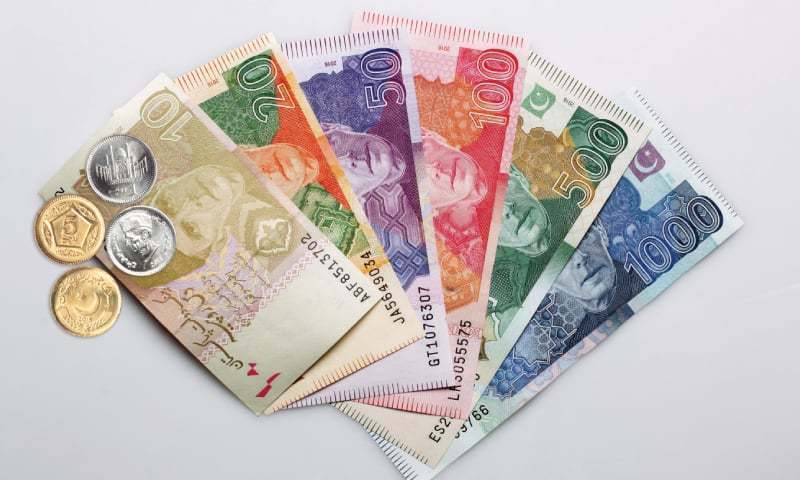ISLAMABAD: The National Economic Council (NEC) meets here on Monday (today) to approve about Rs2.135 trillion worth of next year’s consolidated development budget (FY2021-22) of the federal and provincial governments — almost 61 per cent higher than the current year’s development allocation of Rs1.324tr.
The country’s highest constitutional forum on economic decision-making will also set next fiscal year’s GDP growth rate target at 4.8pc against current year’s revised rate of 3.94pc. The next year’s growth target of 4.8pc is premised to be achieved through 3.4pc growth in agriculture, 6.8pc in industry, including 6.2pc manufacturing, and 4.7pc in services sector.
Prime Minister Imran Khan will preside over the meeting of the NEC whose members include four provincial chief ministers and as many federal and provincial ministers. The prime minister of Azad Jammu & Kashmir, the chief minister of Gilgit-Baltistan and the governor of Khyber Pakhtunkhwa will also attend the NEC meetings, even though they are not formal members.
The federal Public Sector Development Programme (PSDP) for FY2021-22 already recommended by the Annual Plan Coordination Committee (APCC) for NEC’s approval stands at Rs900bn, compared to Rs650bn for the current fiscal year, showing an increase of 38.5pc. The PSDP for FY2021-22 also included Rs101bn foreign funding in the shape of loans and grants.
Forum may also set next fiscal year’s GDP growth rate target at 4.8pc
On the other hand, the four provinces have conveyed their cumulated next year’s annual development plans (ADPs) at Rs1.235tr, which is almost 83pc higher than the current year’s target of Rs674bn. The provincial ADPs of Rs1.235tr includes foreign exchange component of about Rs192bn.
As such, the overall national development portfolio for the next fiscal year is estimated at Rs2.135tr, including a total foreign exchange component of Rs193bn.
The PSDP allocations for next year are being increased despite the fact that current year’s utilisation of funds has so far remained significantly short of target. Officials said utilisation of rupee component stood at just 55pc of the funds earmarked in the budget.
The Planning Commission has reported that Rs577bn local funding was earmarked for the federal development programme in the budget, but only Rs319bn could be utilised as of May 25 — almost 11 months of the fiscal year. The commission also reported that it had authorised utilisation of about Rs473bn by May 25.
However, significantly higher than budgeted international aid and loans have flowed into the country so far, increasing the overall utilisation to a reasonable level.
The Planning Commission said the budget estimates had put foreign aid for the current year at Rs73bn, but actually about Rs87bn came in and the entire amount had already been utilised. It said the total PSDP utilisation, including local funds and foreign aid, reached Rs406bn or 62pc of total allocation of Rs650bn.
In an explanation to the NEC, the Planning Commission has reported that “the utilisation remained low owing to the Covid-19 pandemic which affected development activities adversely”. The NEC would be informed that 255 projects costing Rs218bn will be completed by June 30, 2021.
Even though the total funds demanded by the federal ministries, provinces, AJK and GB stood at Rs1.5tr for FY2021-22, the allocations were contained at Rs900bn keeping in view the utilisation capacity, fiscal space and governmental priorities. Priority has been given to allocation of funds to projects which are likely to be completed by June 2023 and high impact employment generating projects, the commission said.
Next priority has been given to the projects having expenditure over 50pc of project cost, followed by those required rupee cover to the foreign-funded projects, including China-Pakistan Economic Corridor, as per available fiscal space.
The ruling PTI’s priority projects approved over the past two years have been allocated about 25pc of Rs900bn PSDP or about Rs225bn.
About Rs104bn has been allocated for special development goals of which a block allocation of Rs56bn has set aside in the budget of the finance ministry without any backup projects to be later identified by the PTI parliamentarians and Rs27bn in cabinet division.
A total of Rs509bn out of Rs900bn is earmarked for infrastructure. Of this, Rs99.4bn (11pc) is for water resources to support large multipurpose dams, particularly Diamer-Bhasha, Mohmand and Dasu dams, and Rs265bn (29pc) for transport and communications, including Rs43bn viability gap funding to support public-private partnership projects.
A total of five special packages already announced by the government are proposed for regional equalisation with a total allocation of Rs133bn to show a new initiative, but it also includes Rs54bn for development of merged districts of tribal region, and Rs45bn for AJK and Gilgit-Baltistan — a usual annual feature.
An amount of Rs34bn has been allocated for the remaining three projects, including accelerated development plan for southern Balochistan, Karachi transformation plan and development of 14 priority districts of Sindh.
About 57pc of the total allocation has been proposed for infrastructure sector to ensure modern infrastructure and attract foreign investment. The proposed allocation for energy sector stands at Rs103bn (11pc of the total size) and that for physical planning & housing at Rs41bn (5pc of the total size).
Within social sectors, Rs28bn allocation has been proposed for health sector and Rs42bn for education sector. Proposed allocation for Ten Billion Tree Tsunami Programme is Rs14bn for next year. Science & information technology sector will get Rs29bn, while Rs15bn will be given to production sectors like industries, food and agriculture. An amount of Rs10bn has been allocated for the Rs1.119.3tr Karachi-Peshawar Mainline (ML-1) railway project.
It is estimated that in addition to the PSDP financing of Rs900bn, an investment of about Rs60bn will be made in various sectors through innovative financing (PSDP plus) on build, own and transfer and public-private partnership modes. In this regard, the Public Private Authority (P3A) currently has 50 projects at various stages of processing with an aggregate value of about Rs2tr covering railways, roads, logistics, science & technology, water, aviation and health.
Published in Dawn, June 7th, 2021














































